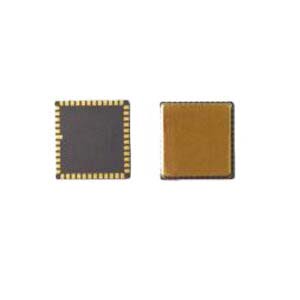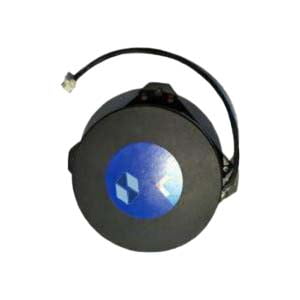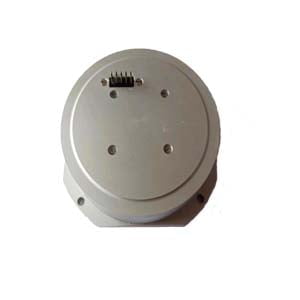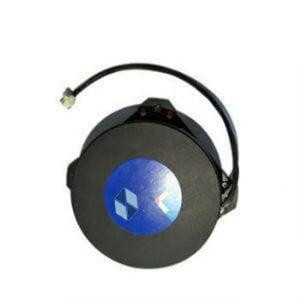The comparison between MEMS gyroscope and FOG is a hot topic in the market. MEMS is Micro-Electro-Mechanical System (MEMS) gyroscopes are motion sensors that detect and measure the angular motion of an object. FOG is Fiber Optic Gyroscope. By measuring the phase-difference of two light beams, a Fiber Optic Gyro (FOG) calculates the speed in degrees per second with which it provides the turn rate of one rotational axis. Whenever FOGs are placed along the x-, y-, and z-axes, angular rates are measured in three dimensions.
In recent years, MEMS inertial sensors have developed rapidly and their accuracy has been continuously improved. At first, MEMS gyroscope could not compete with FOG due to accuracy reasons, because they could not meet the accuracy requirements in many fields. However, with the continuous advancement of MEMS technology, improved error characteristics, environmental stability, increased bandwidth, increased g-sensitivity, and embedded computing capabilities that can run advanced fusion and sensor error modeling algorithms, MEMS gyroscope is becoming more improved and some areas have become a better choice than FOG.
Subdivided according to accuracy, gyroscopes can be divided into commercial gyroscopes, tactical gyroscopes, navigation gyroscopes, and strategic gyroscopes. At this stage, the fastest market and technology development is MEMS gyroscopes, benefiting from the adoption of MEMS gyroscopes by smartphones, its market size has achieved huge growth. MEMS performs well in the consumer field, mainly because of its small size and low cost. FOG mainly faces the high-end market, such as the high-precision national defense field. However, due to the advancement of MEMS technology in recent years, its tactical-grade and navigation-grade MEMS gyroscope has developed rapidly and have become products that can occupy a place in the market. For example, the navigation-grade MG2-50/100 has an accuracy of 0.01-0.02°/hr bias instability and 0.0025-0.005°/√hr angular random walk and can be applied to north seeking in logging tools/gyro tools, pointing, steering and guiding in advanced mining/drilling equipment, precision attitude, position measuring in navigation grade MEMS IMU/INS, etc. Another example is the tactical-grade MG-067, which has an accuracy of <0.3°/hr bias instability and <0.125°/√hr angular random walk and can be used in attitude & azimuth keeping, positioning in IMU, heading, pitch, roll measuring in AHRS for UAV, etc. This shows that the accuracy of MEMS gyroscope has reached a very high level.
MEMS gyroscopes have gradually entered markets dominated by FOG, such as aerospace and inertial navigation fields. Competition between FOG and MEMS is fierce, especially now that MEMS performance is approaching FOG tactical-grade performance levels. Although MEMS gyroscope still cannot surpass FOG in terms of accuracy, FOG still has an advantage in performance, but the market has developed towards lightweight devices, and the cost of FOG is 10 times higher than MEMS. From this point of view, MEMS gyroscopes have more advantages than the large FOG. For civilian fields, such as aerospace, petroleum logging, mining, surveying, etc., their accuracy requirements are not as high as those in military-level application fields, and equipment such as IMUs and INS are becoming smaller and smaller. Smaller and smaller north seekers have also come out one after another, and the field of petroleum logging also requires the installation of smaller gyroscopes to meet the needs of the equipment. Both FOG and MEMS accuracy are affected by temperature changes. This problem can usually be mitigated by calibrating the system within the operating temperature range. MEMS technology is highly sensitive to temperature fluctuations and requires careful temperature compensation. In comparison, a well-designed, properly insulated and calibrated fiber optic gyroscope will generally perform better.
So what are the significant advantages of MEMS gyroscopes compared to FOG?
1. Small size and light weight
MEMS gyroscope is only the size of a fingernail.
2. Low cost
Due to the small size, MEMS is cheap to manufacture, so the cost is lower than FOG.
3. Low power consumption
4. Easy to mass produce
5. It is also widely used
Available in aerospace, petroleum logging, mining, surveying and mapping fields
In summary, MEMS gyroscopes and FOG have their own advantages. MEMS gyroscopes cannot completely replace FOG's market position, but with the advancement of technology, MEMS is getting closer and closer to FOG.
If you want to learn more about MEMS gyroscopes and FOG, please read the related products and articles below.
More Technical Questions
1.What’s the advantages and disadvantages of MEMS gyroscope?
2.MEMS gyroscope VS FOG: What’s the difference between them?
3.How to select MEMS gyroscope?
4.How accurate is MEMS gyroscope?
5.Detailed Explanation of FOG Parameters
6.The Advantages and Disadvantages of FOG
Products in Article







